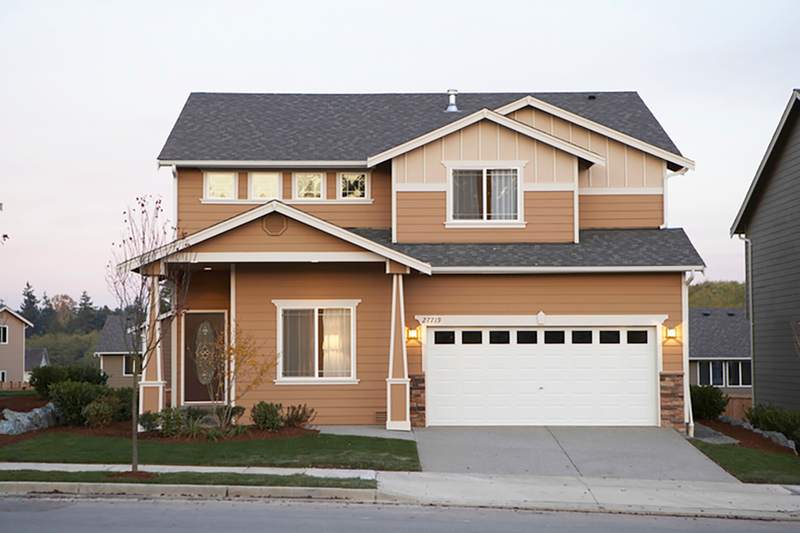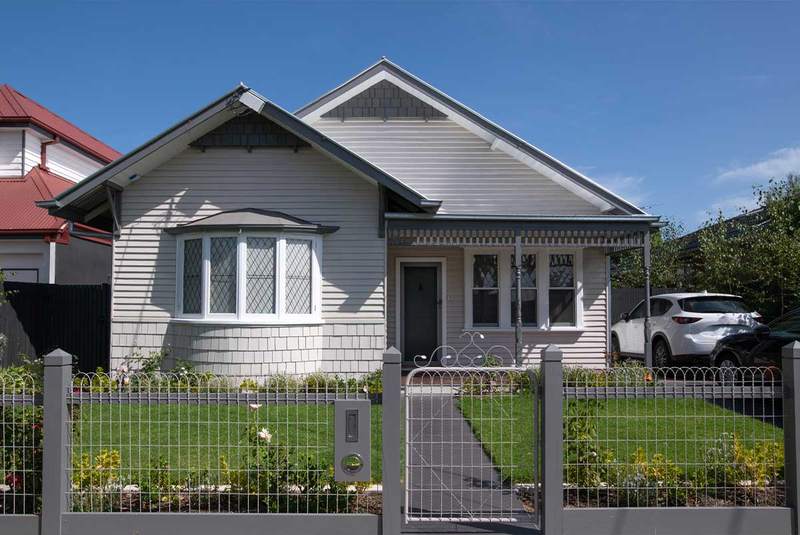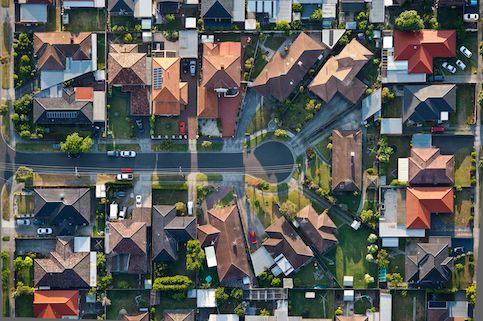Mortgage protection insurance helps protect you and your loved ones if you experience a covered event, such as death, disability or other qualifying hardships. It can also help you avoid foreclosure if you can’t pay your mortgage.
If you’re considering purchasing MPI, use our complete guide to learn more about how it works and how much it can cost, and to decide whether a policy is right for you.
What Is Mortgage Protection Insurance?
Mortgage protection insurance covers monthly mortgage payments on behalf of family or loved ones after a homeowner’s death.
Some insurance policies also protect homeowners in the event of a long-term disability that results in a loss of income or when a policyholder loses their job. MPI is sometimes referred to as mortgage life insurance because most policies only pay out after the death of a policyholder.
What’s Your Goal?
Buy A Home
Discover mortgage options that fit your unique financial needs.

Refinance
Refinance your mortgage to have more money for what matters.
Tap Into Equity
Use your home’s equity and unlock cash to achieve your goals.
How Mortgage Protection Insurance Works
MPI policies generally work like conventional life insurance policies. Each month, you pay your mortgage protection insurer a premium to maintain coverage and ensure your coverage stays current. In exchange for your premium payments, your insurance company will pay a death benefit to your lender. The benefit can cover your remaining mortgage payments, protecting your loved ones from financial stress.
Depending on the terms of your policy, the benefit will pay a predetermined number of mortgage payments or the entire mortgage balance. Unlike traditional life insurance policies, you can’t specify beneficiaries, and your death benefit may decrease over the life of the mortgage.
Mortgage Protection Insurance In Case Of Death
Unlike conventional life insurance, your death benefit goes to your lender, not loved ones or family members. The funds only cover the mortgage and can’t be used for anything else.
Mortgage protection insurance policies typically offer guaranteed acceptance. While your health, medical history or job won’t automatically disqualify you – which is advantageous if you work in a high-risk environment – these factors will likely impact the cost of your policy.
Because MPI offers guaranteed acceptance, you can expect to pay a higher-than-average premium for a policy than a standard term life insurance policy for the same level of coverage. You may end up paying more for less comprehensive insurance.
MPI Regulations
MPI policies are regulated differently from term life insurance policies. For instance, most mortgage protection insurance programs link the death benefit to your remaining mortgage balance. As you make your monthly mortgage payments, the death benefit the insurer pays out will decrease over time.
Most MPI companies set hard time limits on when you can purchase a policy. For example, many companies require purchasing an insurance policy within 2 years of closing on your home loan. But no two offers are alike. Some MPI insurance providers allow homeowners to buy a policy within 5 years of inking a loan.
When evaluating applicants, MPI providers consider various factors, including age, which can affect eligibility and premium costs.
Ready To Become A Homeowner?
Get matched with a lender that can help you find the right mortgage.
Do I Need Mortgage Protection Insurance?
If you’re an aspiring homeowner, you should know that you don’t need mortgage protection insurance to buy a home or maintain a mortgage. However, many lenders recommend borrowers consider purchasing an MPI policy to reduce the risk of mortgage default during financial hardship and protect loved ones after a borrower’s death.
Mortgage Protection Insurance Options
Here’s a breakdown of different types of mortgage insurance and how mortgage protection insurance differs from each one.
MPI Vs. PMI
Lenders typically require borrowers who make less than a 20% down payment to pay private mortgage insurance. PMI protects a lender in case a borrower stops making payments on their loan.
While MPI is typically optional – PMI isn’t. Think of it this way: MPI protects your family by covering your mortgage payments if you can no longer make them. PMI protects a lender from losses if a borrower defaults on their loan.
MPI Vs. MIP
Federal Housing Administration loan borrowers must pay mortgage insurance premiums. Like PMI, MIPs will protect a mortgage lender if a borrower defaults on their FHA loan. FHA mortgage insurance involves two costs: an upfront premium paid at closing and a monthly premium added to your mortgage.
Take The First Step To Buying A Home
Find a lender that will work with your unique financial situation.
How To Get Mortgage Protection Insurance
Interested in MPI but don’t know where to start? Here’s how to get started:
- Connect with your real estate agent or mortgage lender: Depending on your stage in the home buying process, you can work with your real estate agent or lender to get MPI. Several lenders offer MPI. If they don’t, your real estate agent may be able to refer you to an insurance company.
- Shop around: Look at all your options. Even if your mortgage lender offers MPI, look at private insurers, too. Don’t rush and accept the first offer.
- Compare rates, terms and conditions: Ask all your prospective MPI providers for quotes. Compare their rates, terms and conditions to determine which offer best suits your needs.
Where To Get Mortgage Protection Insurance
You can generally turn to several sources to buy mortgage protection insurance:
- Your mortgage lender: Your mortgage lender may offer an MPI policy when you close on your home loan.
- A private insurance company: Depending on your location, you may find many private insurance companies that offer MPI policies.
- A life insurance provider: Many life insurance providers also offer MPI packages. If you have other forms of insurance with a national provider, such as health care, auto, etc., you may be able to save on MPI by bundling your policies.
Start shopping for an MPI policy sooner rather than later. Many MPI policies are subject to time limits. You typically need to apply 24 months after closing. If you need a backup plan beyond this qualifying window, consider a term life insurance policy.
How Much Is Mortgage Protection Insurance?
MPI policyholders typically pay a minimum of $50 a month for a standard MPI policy. However, your total cost will depend on your circumstances and other variables, such as the remaining balance on your mortgage loan and its remaining loan term.
MPI providers will also consider your age, job and current circumstances to assess how much a policy will cost you.
Is Mortgage Protection Insurance Worth It?
The answer will depend on your circumstances. Mortgage protection insurance offers advantages and disadvantages. Let’s review the pros and cons to help you decide whether this insurance policy is worth it for you.
Pros
- Added protection in case of an unexpected death.
- No underwriting process needed for approval.
- Peace of mind that loved ones can handle outstanding financial obligations.
- Can add on optional benefits for additional fees.
Cons
- Extra monthly expense on top of monthly mortgage payments.
- Limited benefits based on well-defined circumstances.
- Potential payouts decrease over time.
- Proceeds go directly to the lender, not your loved ones.
Term Life Insurance: An Alternative To MPI
Consider term life insurance if you’re younger and healthy and don’t think MPI is right for you. A term life insurance policy offers a friendlier price point and more flexibility than MPI.
If you’re experiencing health challenges, consider a guaranteed acceptance term life insurance policy. While it will likely cost more than a standard term life policy, it may be less expensive than MPI.
Term life can be issued in any amount and for any term length, and the total coverage amount is paid out to your beneficiaries in a lump sum – allowing them to use these funds as needed.
FAQ
If you still have questions about mortgage protection insurance, we have answers to some frequently asked questions.
MPI coverage is optional. You can call your insurer anytime to get rid of the insurance. Hanging on to MPI or not is up to you and your financial situation.
The Bottom Line: Is Mortgage Protection Insurance A Good Idea?
Mortgage protection insurance is optional. MPI safeguards policyholders against unforeseen and unfortunate events by paying off an agreed number of monthly mortgage payments or covering the remaining balance on a mortgage. Homeowners who purchase it typically want to ensure their surviving loved ones or family members won’t face financial hardships after their death or another qualifying event.

Scott Steinberg
Hailed as The Master of Innovation by Fortune magazine, and World’s Leading Business Strategist, award-winning professional speaker Scott Steinberg is among today’s best-known trends experts and futurists. A strategic adviser to four-star generals and a who’s who of Fortune 500s, he’s the bestselling author of 14 books including "Make Change Work for You" and "FAST >> FORWARD." The CEO of BIZDEV: The Intl. Association for Business Development and Strategic Planning, his website is www.AKeynoteSpeaker.com.












